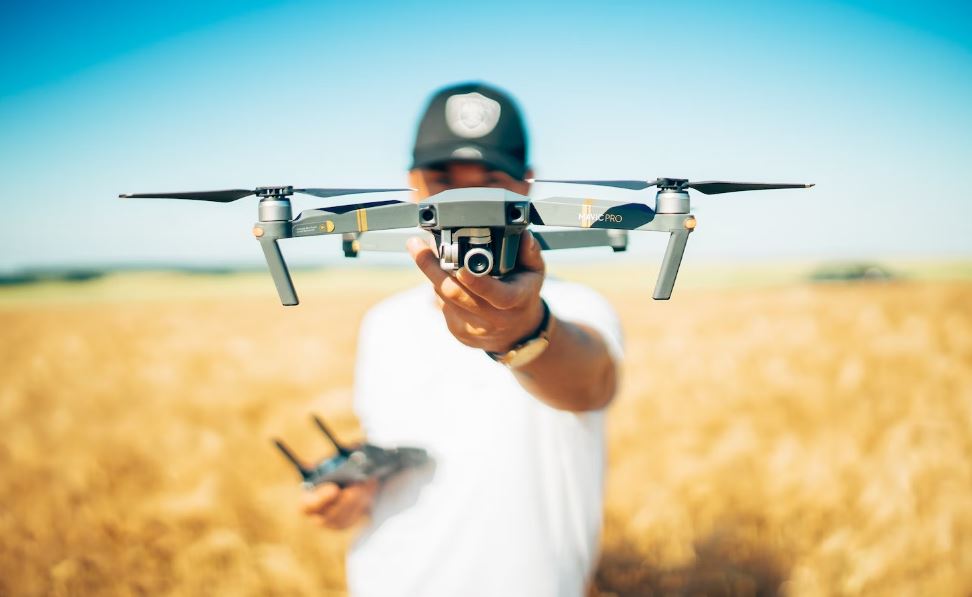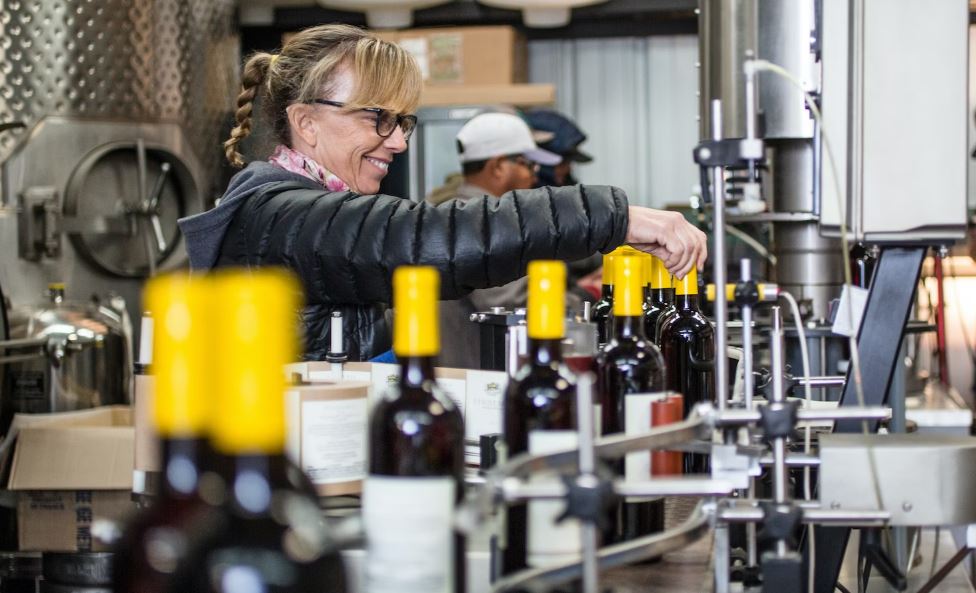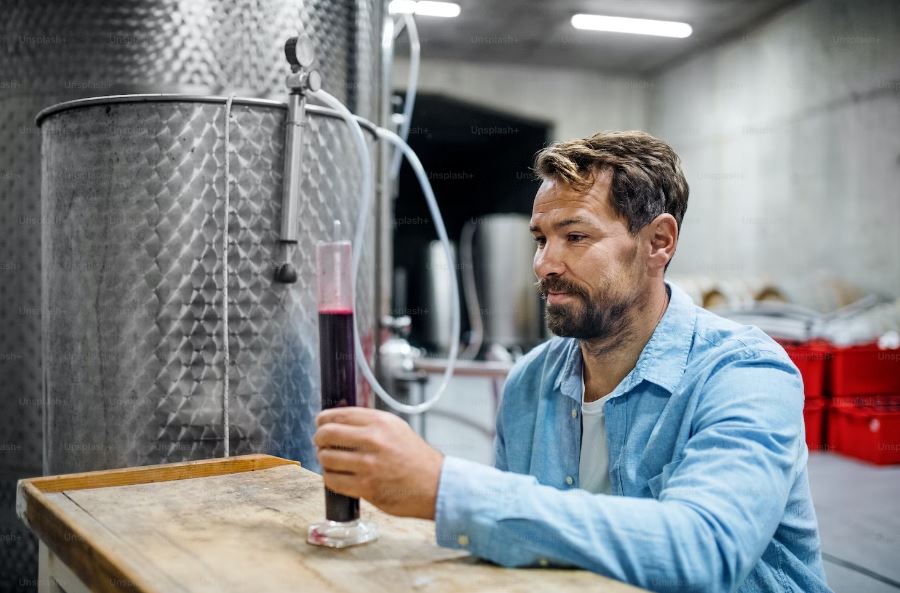Introduction
In the world of winemaking, where tradition and craftsmanship have long been paramount, technology is now emerging as a transformative force.
From the vineyards to the bottle, technology is revolutionizing how wine is produced, distributed, and enjoyed. You’ll explore the fascinating ways in which advancements in technology are reshaping the wine industry, enhancing quality, sustainability, and the overall consumer experience.
The age-old tradition of winemaking, dating back thousands of years, may seem impervious to change. However, the wine industry is in the midst of a technological revolution that is reshaping every aspect of the process, from vine to glass.
In this article, you’ll explore the ways in which technology is revolutionizing the wine industry, from precision viticulture to innovative consumer experiences.
Precision Viticulture
The foundation of great wine starts in the vineyard, and technology is playing a pivotal role in optimizing grape cultivation.
Sensor Technology
Internet of Things (IoT) sensors are becoming commonplace in vineyards. These sensors monitor critical variables like soil moisture, temperature, humidity, and vine health. By collecting and analyzing this data, vineyard managers can make data-driven decisions about irrigation, disease control, and harvesting times.
Drones
Aerial technology is soaring to new heights in vineyards. Drones equipped with cameras and sensors provide detailed aerial imagery and data on vineyard conditions. This allows for real-time monitoring of vine health, identification of pest and disease outbreaks, and assessment of grape ripeness.
Precision viticulture is a cutting-edge approach in agriculture, particularly in the cultivation of grapes for wine production. This methodology involves the use of technology and data-driven techniques to optimize vineyard management and grape production, ultimately leading to higher-quality wines and improved resource efficiency.
Aspects of precision viticulture include the following:
- Data Collection. Precision viticulture relies heavily on data collection from various sources, including satellite imagery, drones, weather stations, soil sensors, and GPS technology. These data sources provide valuable information about vineyard conditions, including soil quality, moisture levels, temperature, and more.
- Data Analysis. Once collected, the data is analyzed using advanced software and algorithms. This analysis helps vineyard managers make informed decisions about irrigation, fertilization, pest control, and harvest timing. It allows for a more precise and targeted approach to vineyard management.
- Variable Rate Technology (VRT). VRT involves the application of inputs (such as water, nutrients, or pesticides) at variable rates across the vineyard based on the specific needs of different areas. This contrasts with traditional uniform application, which can be wasteful and inefficient.
- Yield Mapping. Yield mapping technology uses GPS and sensor data to create maps of grape yields within the vineyard. This information helps vineyard managers identify areas that consistently produce higher or lower yields, allowing for adjustments in management practices.
- Disease and Pest Management. Through ongoing monitoring, precision viticulture helps with early disease and pest detection. This allows for targeted interventions, reducing the need for broad-spectrum treatments and minimizing the environmental impact.
- Harvest Timing. Data-driven analysis helps determine the optimal time to harvest grapes, ensuring that they are picked at peak ripeness, which is crucial for wine quality.
- Sustainability. Precision viticulture promotes sustainability by reducing resource wastage, minimizing chemical inputs, and improving overall vineyard efficiency. This aligns with the industry’s increasing focus on environmentally friendly practices.
- Quality Improvement. By optimizing vineyard conditions and grape production, precision viticulture contributes to the production of high-quality grapes. These grapes are essential for crafting premium wines with consistent flavors and characteristics.
- Cost Efficiency. While precision viticulture requires an initial investment in technology and data analysis tools, it can lead to cost savings in the long run by reducing the need for excessive water, fertilizers, and labor.
Precision viticulture is a data-driven approach that harnesses technology to maximize grape quality, optimize resource utilization, and promote sustainability in the wine industry. By applying these advanced techniques, vineyard managers can produce grapes that are not only of superior quality but also cultivated with greater precision and efficiency.
Winemaking
Winemaking is both an art and a science, and technology is enhancing the science part of the equation.
Winemaking, also known as vinification, is the intricate and time-honored process of transforming grapes into wine. This craft involves various steps and techniques, each of which contributes to the creation of distinct wine styles and flavors.
1. Smart Fermentation
Advanced sensors and data analytics are now monitoring fermentation processes in real-time. This ensures that the conditions are optimal for yeast activity and flavor development, resulting in more consistent and high-quality wines.
Smart fermentation is a technological advancement in winemaking that utilizes data analytics, sensors, and automation to optimize the fermentation process. This approach enhances the winemaking process by ensuring more consistent and controlled conditions during fermentation, resulting in higher-quality wines.
Here are the key components and benefits of smart fermentation:
Sensor Technology
Smart fermentation relies on various sensors that continuously monitor and collect data on the fermentation process. These sensors can measure parameters such as temperature, pH levels, sugar content (Brix), and the production of carbon dioxide and ethanol.
Data Analysis
The data collected by sensors is analyzed in real-time using advanced software and algorithms. This analysis provides winemakers with insights into the progress of fermentation and helps them make informed decisions.
Automation
Smart fermentation systems often include automated controls that allow winemakers to adjust conditions as needed. For example, temperature and nutrient additions can be automated to maintain optimal conditions for yeast activity.
Quality Control
By closely monitoring the fermentation process, winemakers can maintain better control over the development of flavors, aromas, and other critical characteristics of the wine. This results in wines with more consistent quality.
Early Problem Detection
Smart fermentation systems can quickly detect issues such as stuck fermentations, microbial contamination, or temperature fluctuations. Early detection allows winemakers to take corrective actions promptly, reducing the risk of wine spoilage or off-flavors.
Yeast Management
Some smart fermentation systems can track the performance of yeast strains and provide recommendations for adjustments. This helps ensure that the desired yeast strains are working optimally to achieve the desired wine style.
Customization
Winemakers can tailor the fermentation process to specific grape varieties, wine styles, and vintage conditions by adjusting parameters like temperature, fermentation speed, and nutrient additions.
Data Logging and Traceability
Smart fermentation systems record and store data, allowing winemakers to maintain a complete history of each batch. This traceability is valuable for quality control and regulatory compliance.
Cost Efficiency
While the initial investment in smart fermentation technology can be substantial, it can lead to cost savings in the long run. By optimizing the fermentation process and reducing the risk of issues, winemakers can minimize losses and improve overall production efficiency.
Consistency
Smart fermentation contributes to the production of wines with consistent flavor profiles, which is particularly important for wineries that aim to produce wines with a specific and recognizable style.
Smart fermentation represents a significant advancement in winemaking technology. By harnessing data analytics, sensors, and automation, winemakers can achieve greater precision and control during the fermentation process. This results in wines that consistently meet the desired quality standards, making it a valuable tool in modern winemaking.
2. Predictive Analytics
Machine learning and AI models are being employed to predict wine quality and characteristics based on data from the vineyard and winery. This helps winemakers make informed adjustments during the production process to achieve desired flavor profiles.
Barrel Aging Tech
Traditional barrel aging is being complemented by ultrasonic devices and other technologies that speed up the aging process. This reduces the time wines need to mature in barrels without compromising flavor.
Quality Control and Analysis
Ensuring wine quality and safety is paramount, and technology provides powerful tools for quality control.
Spectrometry
Spectrophotometers and other spectroscopy techniques are employed to analyze wine composition. These devices help winemakers monitor quality and make adjustments to achieve desired flavor profiles.
Mass Spectrometry
Mass spectrometry technology can detect the presence of unwanted compounds, such as pesticides or spoilage organisms, in wine, ensuring that only the highest-quality products reach consumers.
Distribution and Sales
Technology has significantly transformed the way wine is distributed and sold, making it more accessible to consumers.
E-commerce
Online wine sales and delivery services have surged, making it easier for consumers to purchase wine directly from wineries and retailers. This shift has accelerated during the COVID-19 pandemic, with virtual tastings and online wine clubs gaining popularity.
Blockchain
Blockchain technology is being used to track the provenance and authenticity of wine bottles, reducing the risk of counterfeit products and instilling confidence in consumers.
AI-Powered Recommendations
Online wine retailers utilize AI algorithms to provide personalized recommendations to customers based on their taste preferences, enhancing the wine-buying experience.
Consumer Engagement
Consumer engagement refers to the strategies and interactions that businesses use to connect with and involve their customers in meaningful ways. In today’s digitally-driven world, consumer engagement has evolved significantly, with technology playing a central role in how businesses interact with their target audiences. Here are some key aspects and strategies related to consumer engagement:
1. Digital Channels
Businesses leverage digital platforms, including social media, websites, email marketing, and mobile apps, to engage with consumers. These channels provide opportunities to share content, answer questions, and gather feedback in real-time.
2. Personalization
Tailoring interactions and content to individual consumer preferences is crucial for engagement. Businesses use data analytics and AI-driven algorithms to personalize marketing messages, product recommendations, and user experiences.
3. Social Media Engagement
Social media platforms are powerful tools for engaging with consumers. Brands use social media to share content, respond to comments, run contests, and build communities of loyal followers.
4. Content Marketing
Providing valuable and relevant content, such as blog posts, videos, and infographics, can attract and retain consumers’ interest. Content marketing establishes brands as industry experts and fosters trust.
5. User-Generated Content (UGC)
Encouraging customers to create and share content related to a brand or product can enhance engagement. UGC can be in the form of reviews, testimonials, photos, or videos.
6. Customer Support and Service
Prompt and helpful customer support is vital for engagement. Businesses use chatbots, online chat, email, and phone support to assist consumers and resolve issues.
7. Email Marketing
Email campaigns remain an effective way to engage consumers. Personalized email marketing can include product recommendations, promotions, and educational content.
8. Interactive Content
Interactive content, such as quizzes, polls, surveys, and live webinars, can actively involve consumers and encourage them to participate.
9. Gamification
Incorporating game-like elements, challenges, or rewards into apps and websites can make the consumer experience more engaging and enjoyable.
10. Influencer Marketing
Collaborating with social media influencers and industry experts can help businesses reach new audiences and build credibility.
11. Customer Loyalty Programs
Loyalty programs and rewards systems encourage repeat purchases and customer retention. Points, discounts, or exclusive offers can incentivize engagement.
12. Feedback and Surveys
Gathering feedback through surveys and feedback forms allows businesses to understand consumer preferences, identify areas for improvement, and demonstrate that they value their customers’ opinions.
13. Community Building
Creating online communities, forums, or discussion boards related to a brand or product can foster a sense of belonging and encourage consumers to share their experiences and insights.
14. Augmented Reality (AR) and Virtual Reality (VR)
AR and VR technologies can provide immersive and interactive experiences for consumers, such as virtual try-ons or product simulations. Wineries are enhancing wine labels with AR apps, offering interactive experiences and additional information to consumers. These augmented labels tell the story behind the wine, making the product more engaging.
15. Virtual Tastings
Virtual reality and video conferencing tools enable wineries to host virtual tastings, allowing them to reach a global audience and providing consumers with unique experiences from the comfort of their homes.
16. Wine Apps
Mobile apps are becoming indispensable tools for wine enthusiasts. These apps provide information on wine ratings, food pairings, and personalized recommendations, enhancing the wine-buying experience and encouraging exploration.
Sustainability
As environmental concerns grow, technology is aiding the wine industry in becoming more sustainable.
Precision Agriculture
Technology is optimizing resource use in vineyards, minimizing chemical inputs, and reducing waste. This approach is not only environmentally friendly but also economically efficient.
Carbon Footprint Analysis
Tools are available to measure the carbon footprint of wine production, encouraging wineries to adopt sustainable practices and reduce their impact on the environment.
Research and Development
Innovation continues to drive the industry forward in terms of grapevine breeding and climate adaptation.
Genomics
DNA analysis is aiding in grapevine breeding and the selection of disease-resistant varieties, ensuring the long-term sustainability of vineyards.
Computational Models
Computational simulations are helping researchers study the effects of climate change on wine regions and explore mitigation strategies, enabling the industry to adapt to changing conditions.
Conclusion
Technology is revolutionizing the wine industry, introducing innovation and efficiency to an ancient craft. From the vineyard to the wineglass, every step of the winemaking journey is benefiting from technological advancements. Whether it’s improving grape cultivation, enhancing winemaking processes, ensuring quality control, or engaging consumers, technology is uncorking a new era of possibilities for the wine industry. As technology continues to evolve, we can expect the world of wine to become even more accessible, sustainable, and exciting for enthusiasts and connoisseurs alike.






